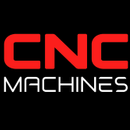The Importance of Skilled Labor in the Fabrication Industry

The Importance of Skilled Labor in the Fabrication Industry
The fabrication industry plays a vital role in modern manufacturing, producing a wide range of components for various sectors, including automotive, aerospace, construction, and energy. However, the industry is currently facing a significant labor shortage, which poses challenges to productivity, quality, and overall growth. This article analyzes the current labor shortage in the fabrication sector, its impact, and strategies for attracting and retaining skilled talent.
1. Understanding the Labor Shortage
Current State of the Labor Market
The fabrication industry, like many other sectors, is experiencing a workforce shortage driven by several factors:
- Aging Workforce: Many skilled workers are nearing retirement, leading to a loss of experienced talent without enough younger workers to fill the gap.
- Lack of Awareness: Many individuals are unaware of the opportunities available in the fabrication industry, resulting in fewer entrants into the workforce.
- Educational Gaps: Technical schools and training programs often do not align with industry needs, leaving graduates without the necessary skills to succeed in fabrication roles.
Impact on the Fabrication Sector
The labor shortage has significant implications for the fabrication industry:
- Reduced Production Capacity: With fewer skilled workers, manufacturers may struggle to meet production demands, leading to delays and lost revenue.
- Quality Control Issues: A lack of experienced personnel can result in decreased quality standards, increasing the likelihood of defects and rework.
- Increased Labor Costs: The demand for skilled labor often drives up wages, impacting profitability for businesses unable to pass these costs onto customers.
2. Strategies to Attract Skilled Labor
A. Enhance Awareness of Career Opportunities
To attract new talent, it is crucial to raise awareness about the opportunities within the fabrication industry:
- Community Outreach: Engage with local schools and community organizations to educate students about careers in fabrication and the skills required.
- Participate in Job Fairs: Attend job fairs and industry events to connect with potential candidates and showcase the benefits of working in fabrication.
B. Develop Strong Partnerships with Educational Institutions
Collaboration with technical schools, community colleges, and universities can help bridge the skills gap:
- Curriculum Development: Work with educational institutions to develop curricula that align with industry needs, ensuring that graduates are equipped with relevant skills.
- Internship Programs: Establish internship and apprenticeship programs that provide hands-on experience to students, making them more attractive candidates upon graduation.
C. Offer Competitive Compensation and Benefits
To attract skilled workers, fabrication companies must provide competitive wages and benefits:
- Benchmarking Salaries: Conduct market research to ensure that compensation packages are competitive within the industry.
- Comprehensive Benefits: Offer benefits such as health insurance, retirement plans, and paid time off to enhance job attractiveness.
3. Strategies to Retain Skilled Labor
A. Foster a Positive Work Environment
Creating a positive workplace culture can help retain skilled employees:
- Employee Engagement: Regularly solicit feedback from employees and involve them in decision-making processes to foster a sense of ownership and loyalty.
- Recognition Programs: Implement employee recognition programs to celebrate achievements and contributions, boosting morale and job satisfaction.
B. Provide Opportunities for Career Development
Investing in employees’ growth is essential for retention:
- Training and Upskilling: Offer ongoing training programs to help employees develop new skills and advance their careers within the company.
- Clear Career Pathways: Create transparent career progression paths that outline how employees can advance and grow within the organization.
C. Promote Work-Life Balance
A healthy work-life balance is increasingly important for employees:
- Flexible Scheduling: Consider offering flexible work hours or remote work options where applicable to accommodate employees’ personal needs.
- Mental Health Support: Provide resources and support for mental health, ensuring that employees feel valued and supported.
4. Conclusion
The labor shortage in the fabrication industry poses significant challenges, impacting productivity, quality, and growth. However, by implementing strategic initiatives to attract and retain skilled talent, businesses can mitigate these issues and ensure a strong workforce for the future.
Enhancing awareness of career opportunities, developing partnerships with educational institutions, offering competitive compensation, fostering a positive work environment, and promoting career development will be crucial for addressing the skilled labor shortage.
As the fabrication industry continues to evolve, investing in skilled labor will be essential for maintaining competitiveness and achieving long-term success in a rapidly changing market.


